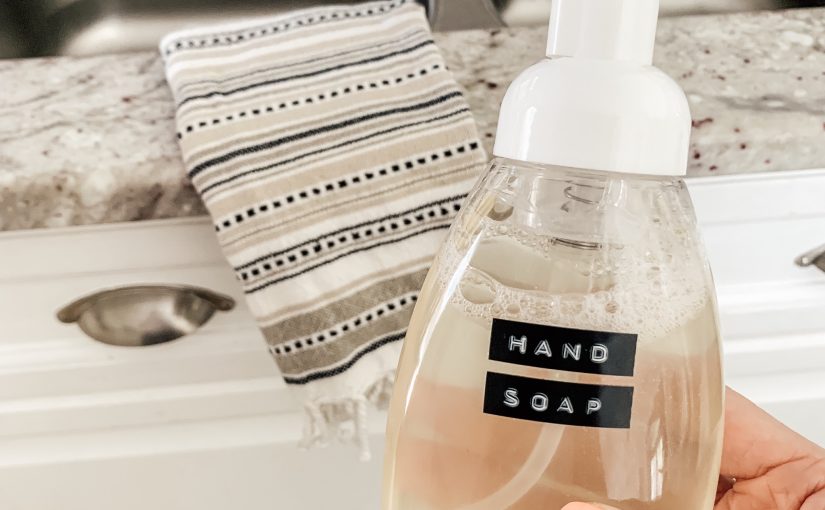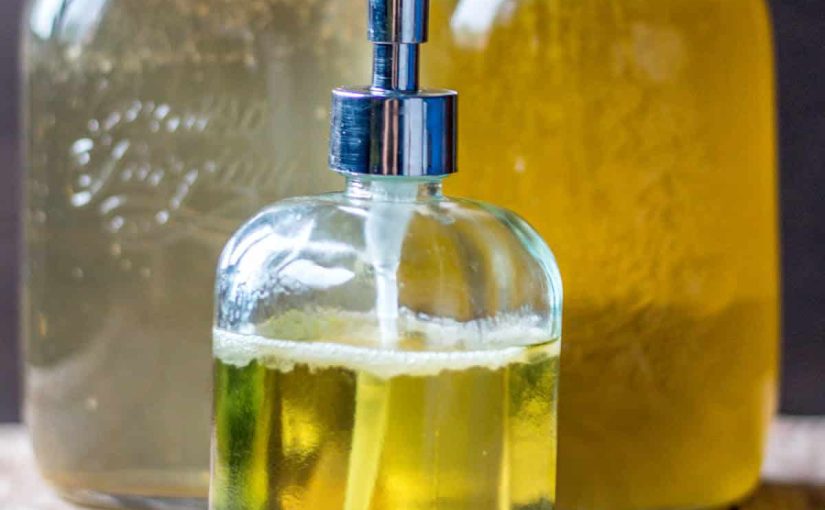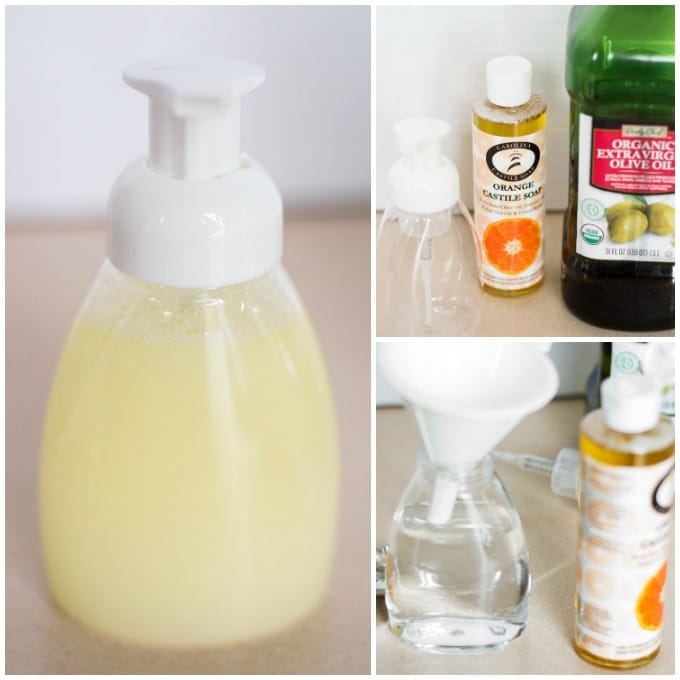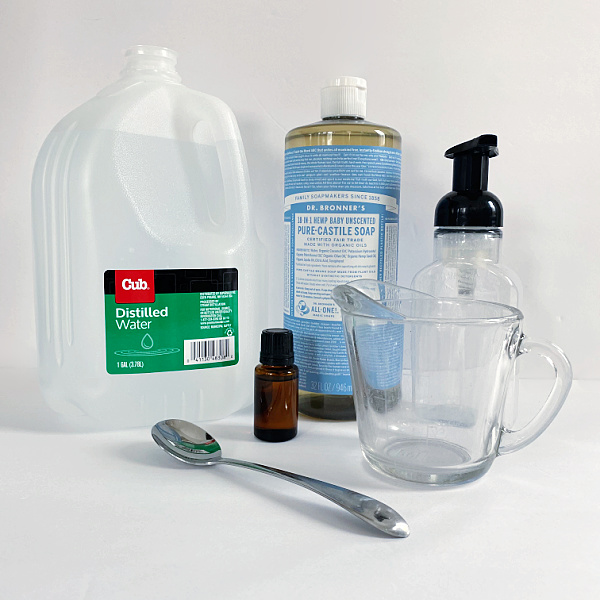Introduction to Homemade Hand Soap
The trend of DIY and crafting has soared, and making homemade hand soap is no exception. Crafting your own hand soap provides a personal touch and allows for customization that store-bought brands can’t offer. Homemade hand soap can be both fun and cost-effective. It lets you control the ingredients, avoiding harmful chemicals often found in commercial products. Whether you’re seeking a gentler alternative for your skin or aim to reduce your environmental footprint, making hand soap at home is an excellent choice. The process is much simpler than you might think, and, with a few basic supplies, you can create an array of soap types designed to suit your needs and preferences.
Essential Ingredients for Hand Soap Making
Making homemade hand soap requires some key ingredients. These essentials form the base of your soap. Each contributes unique benefits to the end product. Here are the main components you’ll need:
- Distilled Water: This acts as the solvent in soap making. It helps to dissolve the other ingredients.
- Lye: Also known as sodium hydroxide, lye is a must-have. It causes the chemical reaction known as saponification.
- Carrier Oils: Oils like coconut, olive, or almond oil give soap its moisturizing properties.
- Essential Oils: They offer natural scents and can provide additional skin benefits.
- Glycerin: This helps your homemade hand soap retain moisture, making it gentle on the skin.
Remember, precise measurements are crucial for a successful soap recipe. Use lye with care, as it is a hazardous substance. Always mix lye with water, not the other way around, to avoid dangerous reactions. When you’ve gathered these ingredients, you’re set to begin your soap-making journey.
Basic Homemade Hand Soap Recipe
Creating your very own homemade hand soap is rewarding and simple. To start, gather your materials. You’ll need distilled water, lye, and a mix of carrier oils such as olive or coconut oil. Essential oils are optional but add a pleasant fragrance and properties that can benefit the skin. Glycerin is also important to make your soap gentle.
To make the basic recipe, follow these steps:
- Put on safety gear, including gloves and goggles, to handle lye safely.
- Measure your ingredients precisely.
- Slowly mix the lye into the distilled water. It will heat up and release fumes, so work in a well-ventilated area.
- Allow the lye solution to cool.
- Heat your carrier oils in a separate pot until they reach the same temperature as the lye water.
- Once at the same temperature, mix the oils into the lye water.
- Stir the mixture. It will start to thicken, which is called reaching ‘trace’.
- Add any essential oils or glycerin at this point.
- Pour the mixture into molds and cover them.
- Insulate the molds with a towel and set aside for 24 hours.
- After setting, remove the soap from the molds and let it cure for four to six weeks.
This basic homemade hand soap recipe offers a starting point. From this foundation, you can explore and customize with different scents, ingredients, and techniques to create endless soap varieties tailored to your preferences.
Luxurious Hand Soap Variations
Creating luxurious hand soap variations is simple. Start by mastering the basic recipe. Then, add special ingredients for a touch of luxury. Experiment with these deluxe additions:
- Shea Butter: Enhances moisture for soft skin.
- Cocoa Butter: Offers a rich feel and soothing scent.
- Jojoba Oil: Mimics the skin’s natural oils for extra nurturing.
- Clay: Great for exfoliation and skin purification.
- Milk: Goat or cow milk provides creaminess and nourishment.
- Honey: Naturally antibacterial and adds a sweet fragrance.
Try blending different carrier oils. For example, avocado oil with olive oil, for unique benefits. Use exotic essential oils like ylang-ylang or jasmine for a decadent fragrance. To add visual appeal, swirl in natural colorants or layer colors. With these customizations, you can create a range of luxurious homemade hand soaps. Gift them to friends or indulge yourself. Remember to record your variations. This way, you can replicate or refine your creations later.
Natural Antibacterial Hand Soaps
For those looking to steer clear of artificial additives, crafting natural antibacterial homemade hand soap is ideal. Using nature’s offerings, such as essential oils and botanicals, you can create soaps with antimicrobial properties. In your antibacterial soaps, consider these potent ingredients:
- Tea Tree Oil: It’s renowned for its antibacterial and antifungal capabilities. A few drops go a long way.
- Lavender Oil: Not only does it have a calming scent, but it also boasts antibacterial effects.
- Eucalyptus Oil: Its refreshing aroma is matched by strong antimicrobial properties.
- Peppermint Oil: Offers a cool sensation while fighting bacteria.
Combine these with your base ingredients like distilled water, carrier oils, lye, and glycerin for a healthy cleanse. Here’s how to infuse your soaps with these natural antibacterials:
- Follow the basic homemade hand soap recipe steps.
- At the ‘trace’ stage, add your chosen antibacterial essential oils.
- Stir well to ensure even distribution throughout the mixture.
- Proceed to pour into molds and continue as per the basic recipe.
By personalizing your homemade hand soap with antibacterial ingredients, you enjoy added protection with every wash. These natural alternatives are not just skin-friendly but also environmentally sound. Take pride in soaps that cleanse effectively without harsh chemicals.
Hand Soap for Sensitive Skin
Crafting hand soap for sensitive skin is thoughtful and considerate. Start with the basic recipe mentioned earlier. Carefully choose gentle ingredients that are kind on the skin. Here are some tips and ingredients to consider:
- Avoid Harsh Chemicals: Keep out substances that can irritate, like sulfates or parabens.
- Use Mild Carrier Oils: Select oils famous for their soothing effects, such as apricot or rice bran oil.
- Include Oatmeal: It’s a natural, gentle exfoliant with soothing properties for itchy skin.
- Add Aloe Vera: It cools and calms the skin, making it perfect for sensitive types.
- Select Unscented or Mildly Scented Essential Oils: Opt for chamomile or frankincense which are gentle yet aromatic.
When you mix the ingredients, handle essential oils with care. Even natural scents can be strong, so use them sparingly. Always patch test the finished product on a small skin area first to ensure it’s non-irritating. Creating homemade hand soap for sensitive skin is not only rewarding but also adds a personal, skin-friendly touch to your daily routine.
Incorporating Fragrances and Colors
Incorporating fragrances and colors into your homemade hand soap adds personal flair. Here are some simple ways to do it:
- Choose Essential Oils for Fragrance: Add oils like lavender or citrus for a fresh scent.
- Use Natural Colorants: Minerals and botanicals, such as turmeric or beetroot powder, give color.
- Test Scents and Colors: Start with small amounts to find the perfect balance for you.
- Mix Thoroughly: Ensure even distribution by stirring your fragrance and colorants well.
When adding fragrances and colors to homemade hand soap, timing is key. Add these elements at the ‘trace’ phase. This is right after the mixture thickens. Experiment with combinations for custom scents and hues. For example, mix peppermint oil with green clay for a refreshing and earth-toned soap.
Selecting fragrances and colors for your hand soap is a creative step. It makes your soap not just a cleaner, but also an experience. Enjoy the process of making each batch unique with your chosen additions.
Moulds and Packaging Ideas for Handmade Soaps
Choosing the right moulds and packaging can turn your homemade hand soap into a standout gift or product. Here’s how to add that special touch to your soaps:
- Silicone Moulds: They are flexible and come in diverse shapes and sizes. Easily remove soap once set.
- Wooden Moulds: Offer a classic look. Line them with parchment paper for easy soap removal.
- Plastic Moulds: A budget-friendly option. They come in many designs suitable for homemade hand soap.
Once your hand soap is cured, focus on the presentation. Here are creative packaging ideas:
- Paper Wraps: Use patterned or colored paper for a simple yet elegant wrap.
- Fabric Pieces: Cut cloth into squares. Wrap soaps for a rustic, homemade feel.
- Tin Containers: Perfect for travel soaps or small gifts. They protect the soap too.
- Cellophane: Allows the color and texture of your soap to show through.
- Custom Labels: Add labels with your brand or the type of soap for a professional touch.
Match your packaging choice to the occasion or the soap’s theme. Use eco-friendly materials to align with the homemade and natural ethos of your hand soaps. Remember to keep your homemade hand soap secure and dry during storage and transport.
Preserving and Storing Handmade Soaps Safely
Preserving homemade hand soap is key to maintaining its quality. Here are steps to ensure your soap stays in prime condition:
- Keep Soaps Dry: Store them in a cool, dry place away from direct sunlight and moisture. This helps prevent melting and preserves the scent and properties of the soap.
- Use Paper or Cloth: Wrap soaps in paper or cloth that allows them to breathe. This prevents sweating and scent loss.
- Avoid Plastic Bags: They can trap moisture and lead to soap spoilage.
- Curing Time: Allow handmade soaps to cure properly for four to six weeks before storage. This ensures hardness and longevity.
- Rotation: Use older soaps first and keep adding newer ones to your storage. This way your stock stays fresh.
- Check Often: Look for any signs of spoilage or scent loss. Use up any soaps that start to lose their quality.
By following these tips, your homemade hand soap will stay fresh and effective for longer. Be sure to handle your soaps with care, and enjoy the benefits of your personal handcrafted creations.
The Environmental Impact of Using Homemade Soaps
Choosing to make homemade hand soap isn’t just a hobby, it’s a lifestyle choice with a positive environmental impact. Switching from commercial soaps to DIY soaps is beneficial not only for your skin but also for the planet. Here’s how homemade soaps make a difference:
- Reduced Chemical Runoff: Home-crafted soaps often use natural ingredients, diminishing the chemical runoff that comes from mass-produced soaps.
- Less Plastic Waste: By using and reusing your own containers, you cut down on the plastic that ends up in landfills.
- Lower Carbon Footprint: Making soap at home means you’re not contributing to the emissions from large-scale production facilities.
- Sustainable Ingredients: Choosing organic and locally sourced materials for your soaps supports sustainable farming practices.
Each small decision in the soap-making process can have a large ecological benefit. From picking biodegradable elements to minimizing packaging, your homemade hand soap can be a part of an eco-friendly routine. This simple change in how we clean our hands could help in sustaining a healthier planet. Be proud knowing that every time you wash your hands with your homemade soap, you’re being kind to the environment.
Troubleshooting Common Hand Soap Making Problems
Making homemade hand soap can sometimes present challenges. It’s important to recognize common issues and know how to fix them. Here are some troubleshooting tips for frequent hand soap making problems:
- Soap Doesn’t Set: This might happen if the lye and water did not react properly or if the soap hasn’t cured long enough. Check your measurements and give your soap more time to set.
- Soap Is Too Soft: Too much oil or glycerin can cause this. Reduce the amount of oil and ensure proper ratios of ingredients for your next batch.
- Soap Is Too Oily or Greasy: This could be due to excess oil or incorrect temperatures when mixing. Ensure all ingredients are at the right temperature before combining.
- Cracks in Soap: Soap might crack if it’s poured into molds while too hot or if it cools too rapidly. Pour at a lower temperature and insulate your molds gently to cool gradually.
- Lye Heavy Soap: If soap feels harsh and drying, it may have too much lye. Carefully measure lye and oils to maintain a balance. A soap calculator can help prevent this issue.
- No Lather: Some oils create less lather. Add oils like coconut or castor oil for better suds.
- Fading Scent: Essential oils can evaporate if added when the mixture is too hot. Add them at a lower temperature at the ‘trace’ stage.
- Discoloration: Some ingredients react with each other causing discoloration. Use stable oils and colorants to prevent this.
Remember, practice makes perfect. Keep experimenting and refining your technique. Your homemade hand soap quality will improve with each batch you make.







